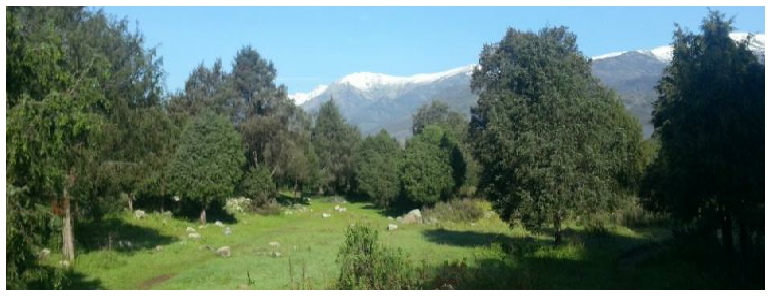
EXTREMADURAN
The Spanish Autonomous Community of Extremadura (41,000 sq km) is perhaps Western
Europe’s last frontier. It is the most spasely populated region in Europe. It has
several mountain ranges, the highest peak being Almanzor at 8,500’. The Tajo and
Guadiana are the main rivers. Mostly, Extremadura is covered by dehesa, primeval
Mediterranean pastureland scattered with huge oak trees at a typical density of 20
to the acre. The oaks protect the pastures from the eroding and dessicating effect
of the wind and sun. Their long root systems extract nutrients from the soil which
are turned into acorns and leaves which are eaten by the Iberian pigs, goats and
sheep. The animals, in turn, fertilize the pasture. Their meat and milk are of supreme
quality – the result of a free range eco-
Our sheep cheeses are products of large Merino herds that were originally brought into Spain by the conquering Moors in the 8th century. Goats are found everywhere in Extremadura, browsing and grazing the wild flowers and flora. In the case of Ibores PDO cheese, they range in the rugged and remote Las Ibores mountain region. Extremadura's other famous product is the Jamon Iberico, made from the Iberian pig.
Most of the Conquistadores came from Extremadura. Extremadura was a poor region with little prospects for young men, so a large number of the more adventurous went to the Americas, which had just been discovered by Columbus in 1492. Cortes, Bilboa, several Pisarros, De Soto, de Alvarado, and many more, were all Extremaduran youngsters who apparently found hardship in the Americas easy going compared with life back home. They all accumulated vast wealth, billionaires in todays money, which they funelled back home to Extremadura and used to build palaces to show the locals how well they had done. Extremaduran town and village names are found all over North and South America in memory of the conquistadores' home towns, eg Merida, Medellin, Guadalupe, Albuquerque.
Extremadura has some fabulous towns and cities.
The capital of Extremadura is Merida (pop 60k), named because Caesar Augustus designated it as an area that retired legionnaires could settle and farm. (emeritus = retired). It is one big open air Roman museum, with a theatre, amphitheatre, aquaducts, racetrack, and a bridge, 750m long, which is the longest surviving Roman bridge in the world.
Badajoz is the largest town in Extremadura (pop 150k). It is also the capital of Bajadoz Province, one of the two provinces which make up Extremadura. It is on the Portuguese border and played an important role in the Peninsular wars, with a famous siege by The Duke of Wellington, who ousted the occupying French.
Caceres (pop 100k) is one of the most beautiful towns in Europe. It is capital of Caceres Province, which makes up the top half of Extremadura. Many of the conquistadores returned from the Americas fabulously wealthy, and they built palaces in Caceres, which all stand intact in the Old City. The town is a wonderful mixture of Roman, Moorish, Gothic and Renaissance architecture.
Trujillo (pop 10k) is a historically important Extremaduran town. It has one of the most beautiful squares in Spain, dominated by Pizarro's palace, built by the Pizarro family with money from the Americas after their father, Francisco Pizarro, conquered Peru.
Plasencia (pop 45k)
walled market town is situated on the banks of the Jerte river, a few km downstream from the Jerte valley, the largest cherry growing region in Europe.
Guadalupe (pop 2k) is the spiritual home of Catholicism in Spain. It is second only to Santiago as a pilgrimage centre. Christopher Columbus brought slaves back from the Americas and had them babtised in the fountain in the small town square. Practically every Catholic monarch and important person in Europe would visit the shrine of Our Lady of Guadalupe. They would bring gifts for the black madonna. So many royalty visited that they build a special hospederie for them which poached top chefs from all over Europe, so that for many years Guadalupe was the centre of European gastronomy.